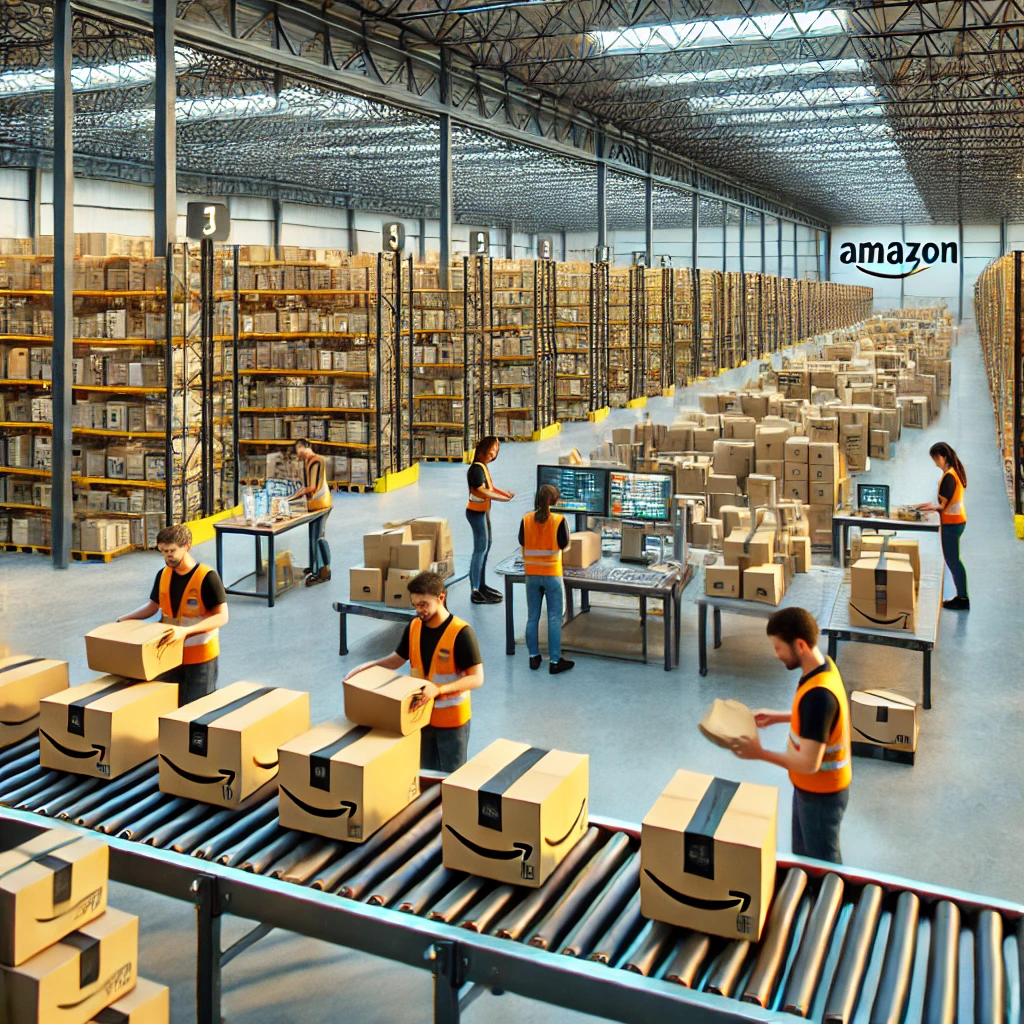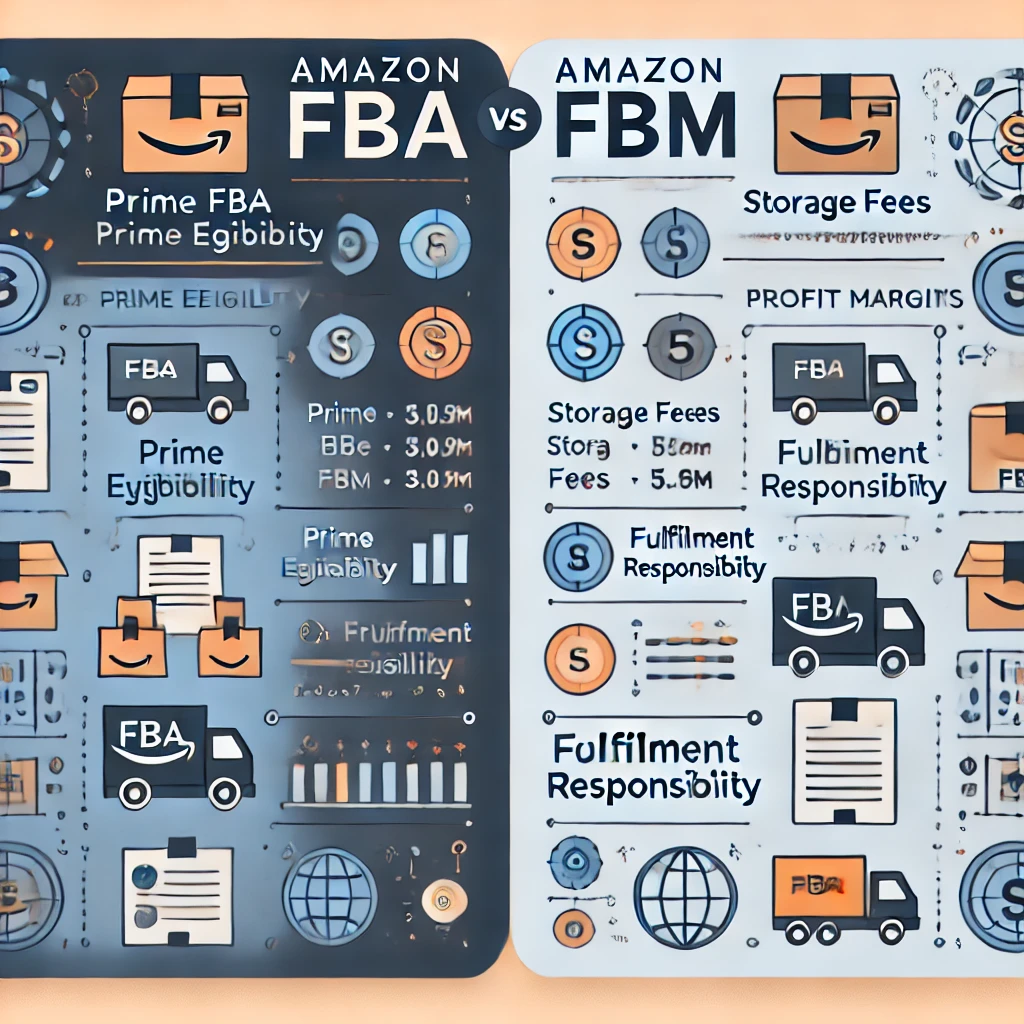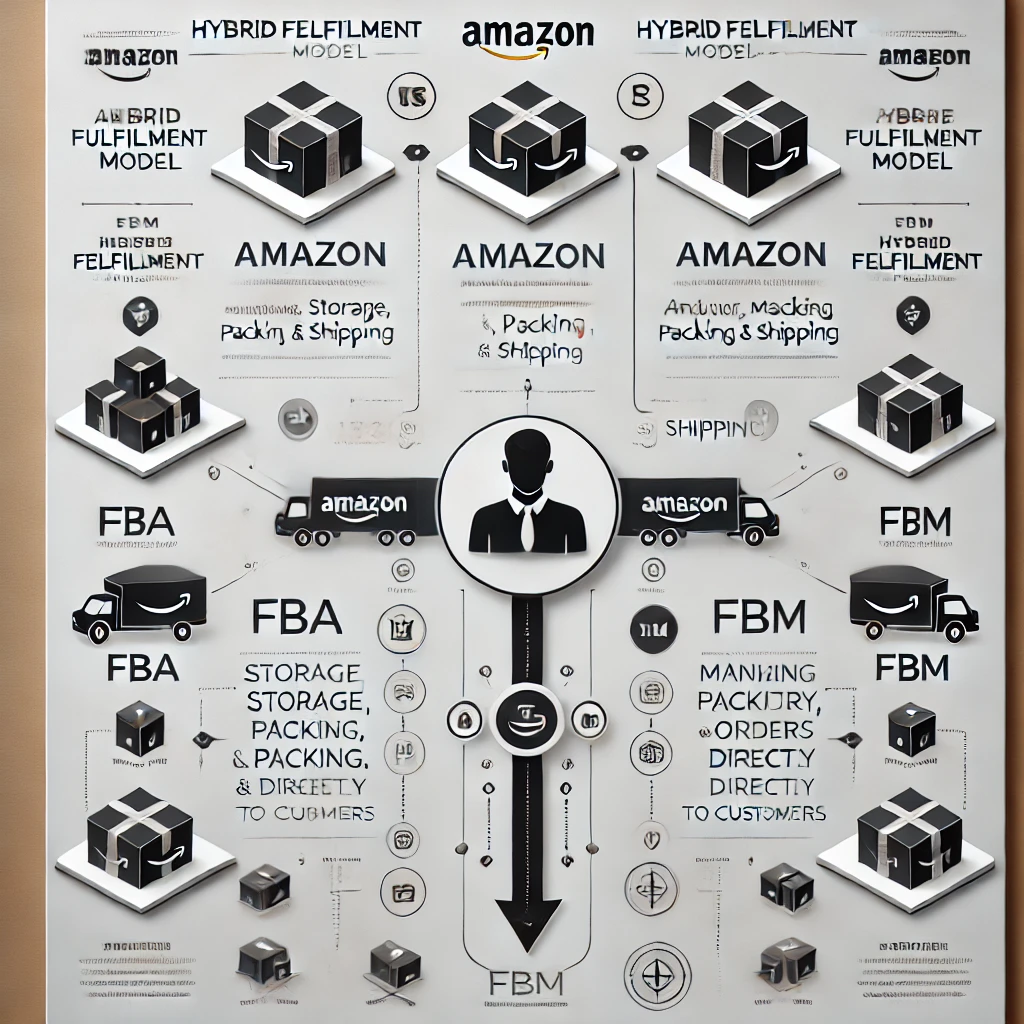
Amazon FBA vs. FBM: Which Fulfillment Method is Best for Your Business in 2025?
Amazon sellers often face one of the most critical decisions when launching their business: Fulfillment by Amazon (FBA) vs. Fulfillment by Merchant (FBM). Both models have their advantages and drawbacks, but choosing the right one can significantly impact your profitability, efficiency, and overall business growth. In this blog, we’ll break down FBA and FBM, their benefits, challenges, and which model suits your business in 2025.
What is Amazon FBA?
Amazon Fulfillment by Amazon (FBA) allows sellers to store their inventory in Amazon’s fulfillment centers. Amazon takes care of storage, packing, shipping, customer service, and returns. Sellers using FBA get access to Prime eligibility, faster shipping, and increased visibility on the platform.

Pros of Amazon FBA:
- Prime Badge – Increased visibility and trust from customers.
- Hassle-Free Logistics – Amazon handles shipping and returns.
- Higher Sales Potential – Prime members prefer FBA products.
- Amazon Customer Support – Amazon manages inquiries and refunds.
Cons of Amazon FBA:
- FBA Fees – High storage and fulfillment costs.
- Less Control – Amazon manages inventory, which can lead to storage limits or unexpected removals.
- Long-Term Storage Fees – Higher costs if inventory moves slowly.
What is Amazon FBM?
Fulfillment by Merchant (FBM) means sellers store, pack, and ship orders themselves or through a third-party logistics provider (3PL). They have full control over inventory management but must handle customer service and returns independently.

Pros of Amazon FBM:
- Lower Fees – No FBA storage or fulfillment fees.
- Full Control – Better inventory management and flexibility.
- Better for Large or Heavy Items – Avoid excessive storage costs.
- Branding Opportunity – Control over packaging and customer experience.
Cons of Amazon FBM:
- No Prime Badge – Reduced visibility and trust factor.
- Shipping Responsibility – Sellers manage logistics and returns.
- Increased Customer Support Burden – Handling inquiries and complaints directly.
FBA vs. FBM: Which is Right for You in 2025?
The best choice depends on your business goals, product type, and financial capacity. Here’s a quick comparison:

Factor FBA FBM
Prime Eligibility ✅ Yes ❌ No
Storage & Shipping ✅ Amazon Handles ❌ Seller Handles
Fees ❌ High (Storage & Fulfillment) ✅ Lower
Inventory Control ❌ Limited ✅ Full Control
Customer Service ✅ Amazon Handles ❌ Seller Handles
Best For Fast-selling, small & lightweight products Heavy, oversized, or unique products
The Future of Amazon Fulfillment in 2025
With rising Amazon storage fees and stricter policies, some sellers are shifting towards a hybrid model – using FBA for fast-moving products and FBM for slow-moving, bulky, or personalized items. Leveraging third-party fulfillment centers for FBM can also optimize costs while maintaining shipping efficiency.

Expert Tip: Use Data to Decide
Analyze your profit margins, storage costs, and sales velocity before choosing a fulfillment model. Amazon’s FBA Calculator helps estimate fees and profitability.
“The best fulfillment model isn’t just about cost—it’s about efficiency, customer experience, and long-term scalability.”
Final Verdict
- Choose FBA if you want Prime benefits, less operational hassle, and higher visibility.
- Choose FBM if you want lower fees, full inventory control, and better margins for large items.
Many successful sellers use a hybrid approach to maximize profits while minimizing risks. Test both models and analyze which works best for your Amazon business in 2025.
Need Help with Amazon FBA or FBM? Contact our experts at RGB LOGIX to optimize your fulfillment strategy today!







